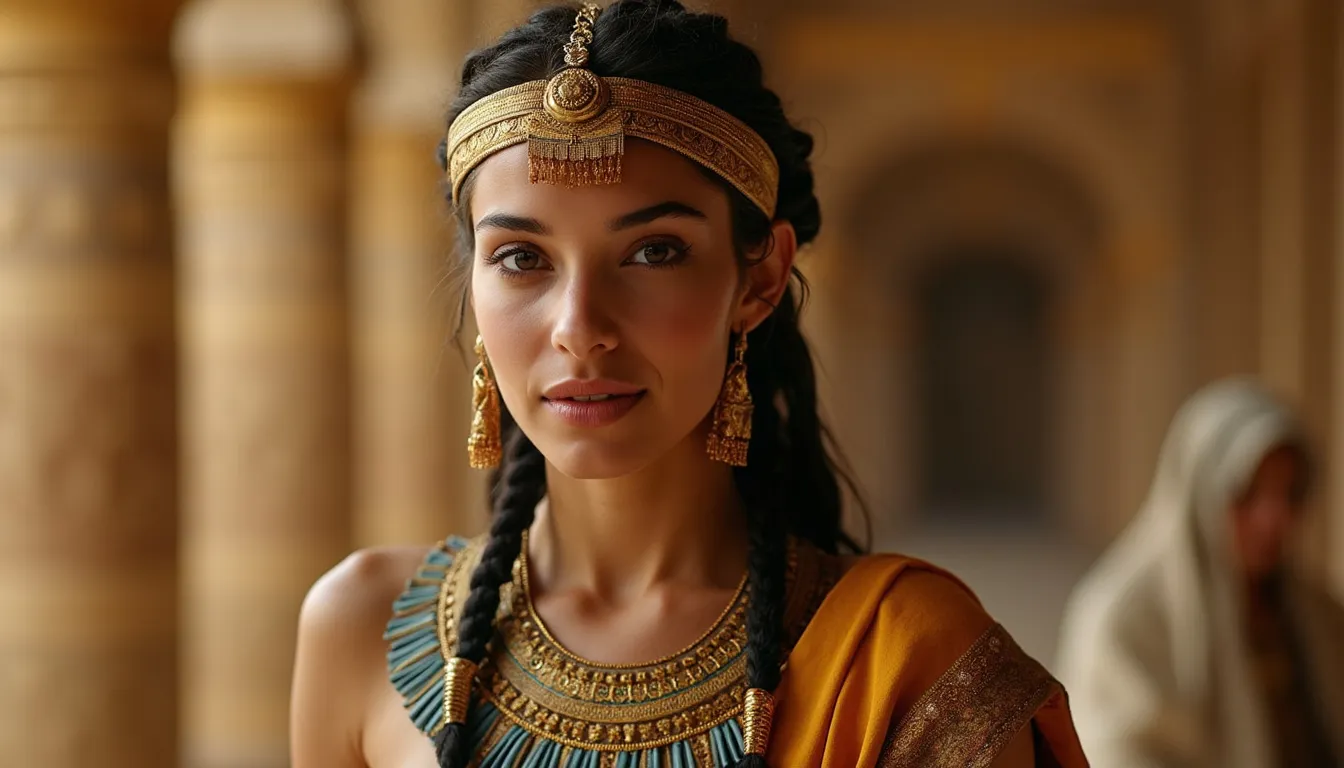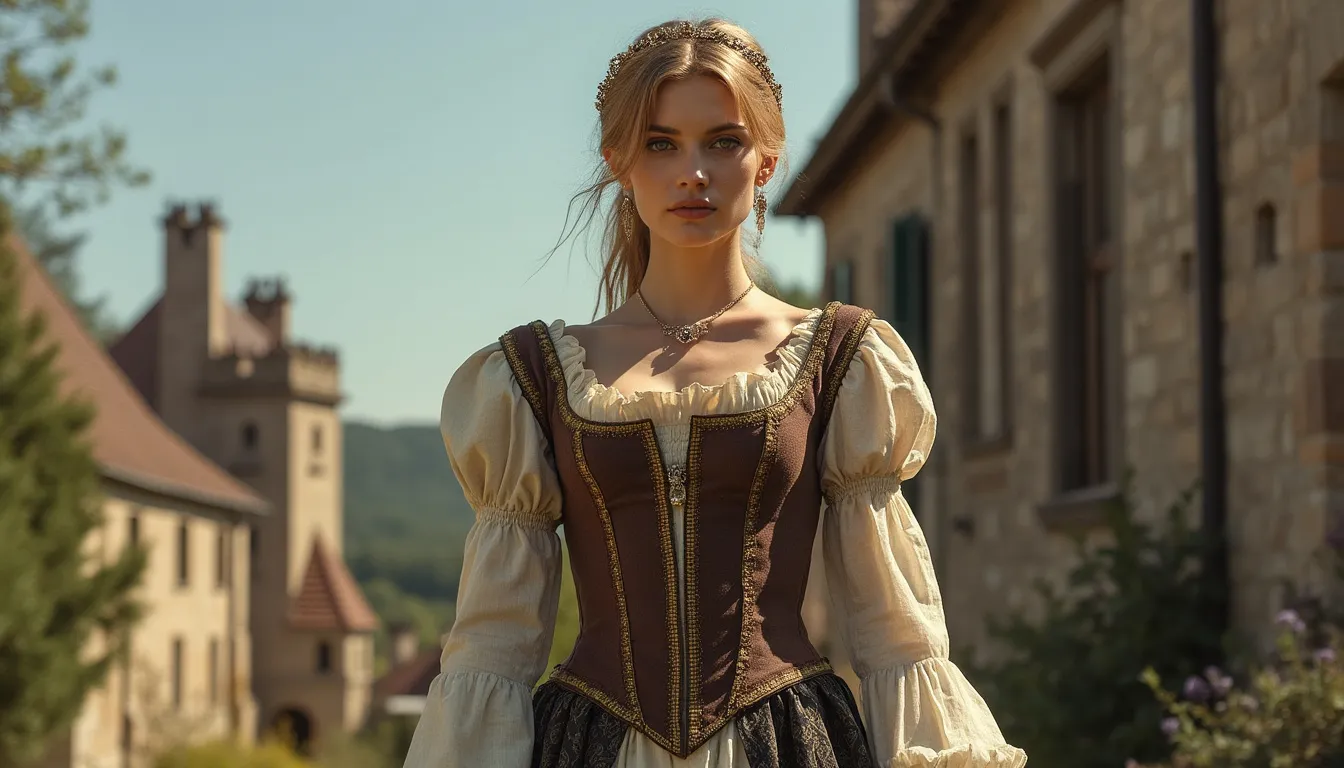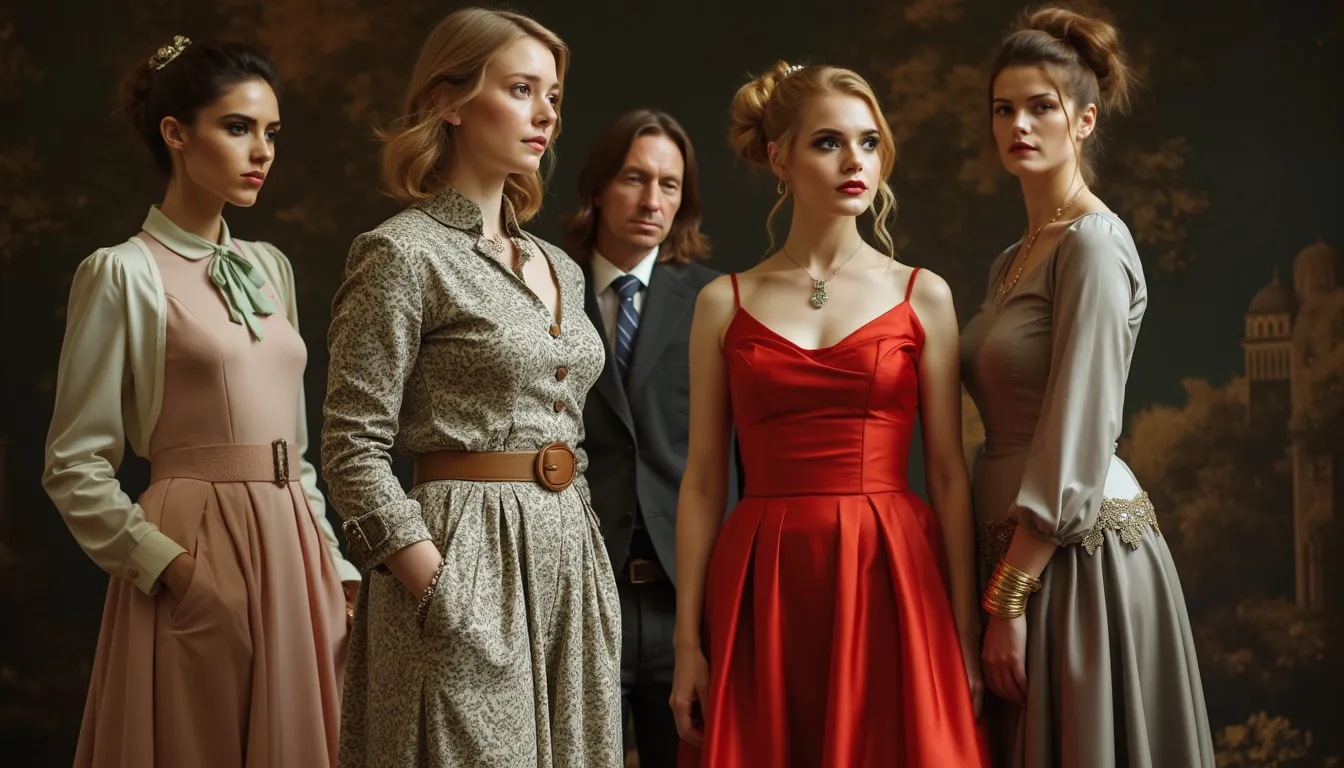Fashion: The Definitive Visual Guide

Fashion intricately weaves a rich tapestry throughout history, spanning diverse cultures and eras. This vibrant industry not only shapes identities but also mirrors societal changes. The history of fashion unveils a captivating journey from ancient times to contemporary innovations. Each era reinvents styles, highlighting creativity and cultural influences. As a multi-billion dollar powerhouse, the fashion industry significantly impacts both economies and environments. Addressing environmental challenges could potentially yield a $192 billion benefit by 2030. Immerse yourself in this visual and historical narrative to explore how fashion continues to evolve and inspire.
Ancient Fashion
Ancient Egypt

Clothing and Materials
Ancient Egyptian clothing reflected the climate and resources of the region. Men often wore a simple loincloth known as the schenti. Higher-class individuals preferred longer schenti paired with capes or tunics. Children typically remained unclothed until the age of six. Linen, derived from flax plants, served as the primary material due to its lightness and breathability. Wealthier Egyptians adorned their garments with intricate pleats and dyes. Jewelry added color and indicated social status.
Symbolism and Status
Clothing in ancient Egypt held significant symbolic meaning. The use of specific colors and materials often indicated social hierarchy. Gold and precious stones adorned the attire of pharaohs and nobility, symbolizing power and divine connection. Religious beliefs influenced fashion choices, with certain garments reserved for rituals and ceremonies. Clothing became a visual representation of wealth and influence.
Ancient Greece and Rome
Drapery and Design
Clothing in ancient Greece and Rome showcased elegant drapery and design. Greeks favored garments like the chiton and peplos, which featured elaborate designs and bright colors. Romans adopted similar styles, with togas and tunics highlighting power and grace. Luxurious fabrics and elegant silhouettes defined the era. Women wore long dresses with belts under the chest, emphasizing femininity.
Influence on Modern Fashion
Ancient Greek and Roman fashion continues to inspire modern designers. The emphasis on drapery and form remains evident in contemporary styles. Designers often draw from these classical elements to create timeless pieces. The legacy of ancient fashion endures, influencing both haute couture and everyday wear. This historical foundation enriches the understanding of fashion's evolution.
Medieval to Renaissance Fashion
Medieval Europe

Fabrics and Textures
Medieval Europe showcased a variety of fabrics and textures. Wool served as the most common material for everyday clothing. Linen provided comfort during warmer months. Wealthy individuals wore luxurious fabrics like silk and velvet. These textiles often came from distant lands, reflecting trade connections. Embroidery added intricate details to garments. Clothing often displayed vibrant colors achieved through natural dyes.
Social Hierarchy and Dress
Fashion in medieval Europe clearly indicated social hierarchy. Nobles adorned themselves with elaborate garments. Peasants wore simpler attire. Sumptuary laws regulated clothing based on class. These laws restricted certain colors and materials to the upper classes. Jewelry and accessories further distinguished social status. Clothing became a visual representation of wealth and power.
Renaissance Elegance
Innovations in Tailoring
The Renaissance period introduced significant innovations in tailoring. Tailors crafted garments with precision and artistry. Men's fashion featured shorter hemlines and two-tone hose. The codpiece emerged as a notable addition. Women's dresses emphasized form and structure. Corsets and farthingales shaped silhouettes. Luxurious fabrics like silk and brocade dominated the era.
Influence of Art and Culture
Art and culture significantly influenced Renaissance fashion. Artists depicted clothing with great detail in paintings. These works inspired contemporary styles. Fabrics and designs reflected the opulence of the time. Fashion mirrored the cultural rebirth of the Renaissance. Modern fashion still draws inspiration from this period. Many current styles trace back to Renaissance influences.
18th to 19th Century Fashion
The Age of Enlightenment
Marie Antoinette's Influence
Marie Antoinette played a pivotal role in shaping 18th-century fashion. Her extravagant style set trends across Europe. Lavish gowns with intricate embroidery became popular. The use of pastel colors and elaborate hairstyles defined her influence. Fashion during this time reflected the opulence of the French court. Clothing choices mirrored the social and political climate of the era.
The Rise of Fashion Houses
The late 18th century witnessed the emergence of fashion houses. Designers began to establish their brands. These houses offered bespoke clothing for the elite. The concept of haute couture took root. Fashion houses like Worth became renowned for their craftsmanship. This period marked a shift towards personalized fashion experiences. The rise of fashion houses laid the foundation for modern design.
Victorian Era
Industrial Revolution Impact
The Industrial Revolution transformed fashion in the 19th century. Mass production made clothing more accessible. Factories produced textiles at unprecedented rates. New machinery allowed for faster garment creation. The availability of ready-to-wear clothing increased. Fashion became more affordable for the middle class. The Industrial Revolution democratized fashion, changing how people dressed.
Gender and Fashion
Fashion in the Victorian era highlighted gender distinctions. Men's clothing emphasized formality and structure. Tailcoats and waistcoats became staples of male attire. Women's fashion featured voluminous skirts and corsets. The crinoline created dramatic silhouettes. Gender roles influenced clothing styles and choices. Fashion provided insights into societal norms and expectations.
20th Century Fashion Revolution

Early 20th Century
Chanel and the Little Black Dress
Gabrielle "Coco" Chanel revolutionized fashion in the early 20th century. Chanel introduced the iconic Little Black Dress in 1926. This simple yet elegant garment became a staple in women's wardrobes. The design emphasized comfort and style, breaking away from restrictive clothing. Chanel's influence extended beyond the dress, shaping modern fashion with her innovative ideas.
Dior's New Look
Christian Dior launched the New Look in 1947. This collection redefined post-war fashion with its emphasis on femininity. The New Look featured full skirts and cinched waists, creating an hourglass silhouette. Dior's designs contrasted sharply with wartime austerity. The New Look symbolized a return to luxury and elegance, influencing designers worldwide.
Mid to Late 20th Century
The Swinging Sixties
The 1960s marked a vibrant era in fashion history. Designers embraced bold colors and patterns, reflecting the decade's spirit. Miniskirts and mod styles gained popularity among the youth. Mary Quant played a crucial role in popularizing these trends. Fashion mirrored social changes, capturing the essence of freedom and rebellion.
Punk and Street Style
The late 20th century saw the rise of punk and street style. This movement challenged traditional fashion norms. Designers like Vivienne Westwood embraced edgy aesthetics. Punk fashion featured ripped clothing, leather jackets, and bold accessories. Street style emerged as a powerful form of self-expression. Social media amplified these trends, making fashion a catalyst for cultural change.
Contemporary Fashion
The Role of Social Media
Social media platforms have transformed the fashion landscape. Influencers play a crucial role in shaping trends. These individuals showcase new styles and brands to their followers. Platforms like Instagram and TikTok amplify these trends. Algorithms prioritize popular posts, spreading them rapidly. This process allows trends to gain momentum quickly.
Digital fashion shows have emerged as a modern phenomenon. Designers now present collections online. This approach reaches a global audience instantly. Virtual runways offer unique experiences. Viewers can interact with the content in real-time. This innovation democratizes access to high fashion.
Fast Fashion vs. Sustainable Fashion
Fast fashion dominates the industry with affordable clothing. Brands produce garments at a rapid pace. This approach leads to significant environmental concerns. Factories consume vast resources and generate waste. The impact on ecosystems is profound. Consumers face a dilemma between cost and conscience.
Sustainable fashion offers an ethical alternative. Designers focus on eco-friendly materials and practices. Brands emphasize fair labor conditions. This movement encourages mindful consumption. Shoppers seek quality over quantity. The shift towards sustainability reflects growing awareness.
Diversity and Inclusion
Diversity in fashion has gained importance. Representation matters in design and marketing. Brands now celebrate different body types and ethnicities. This change fosters a more inclusive industry. Consumers feel seen and valued in this environment.
Global influences enrich contemporary fashion. Designers draw inspiration from various cultures. This blend creates unique and innovative styles. Fashion becomes a universal language. The exchange of ideas enhances creativity and connection.
Fashion showcases a rich history and diverse evolution. Each era reflects cultural shifts and technological advancements. Future trends will embrace smart materials and data-driven designs. Social media continues to redefine style, promoting inclusivity and sustainability. The fashion industry must balance innovation with ethical practices. Fashion serves as both art and historical narrative, offering insights into societal changes. Appreciating this dynamic field enriches understanding and inspires creativity.
See Also
Visual Design Encyclopedia: The Ultimate Reference
Visual Art Encyclopedia: The Ultimate Reference
Visual Science Encyclopedia: The Ultimate Reference
Visual Inventions Guide: An Encyclopedia
Visual Military Objects Encyclopedia: A Comprehensive History

